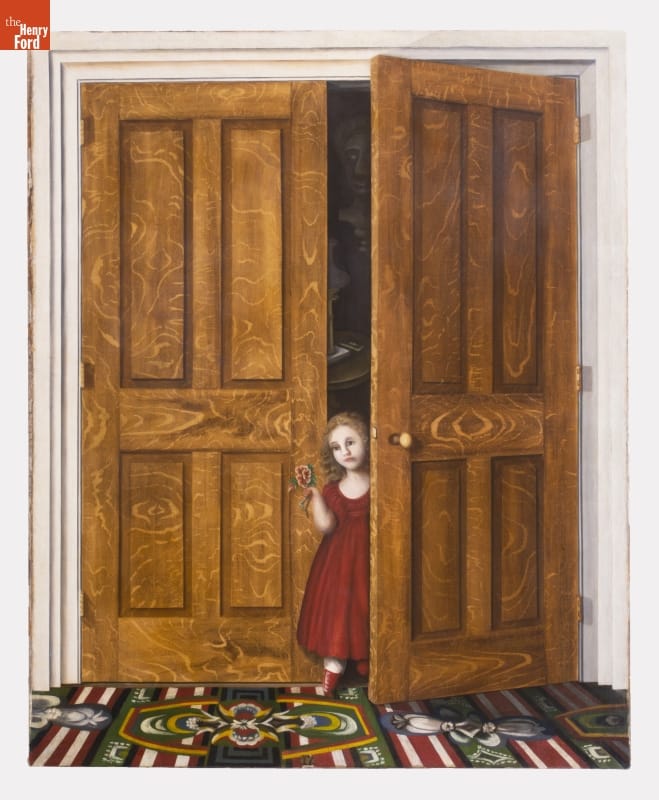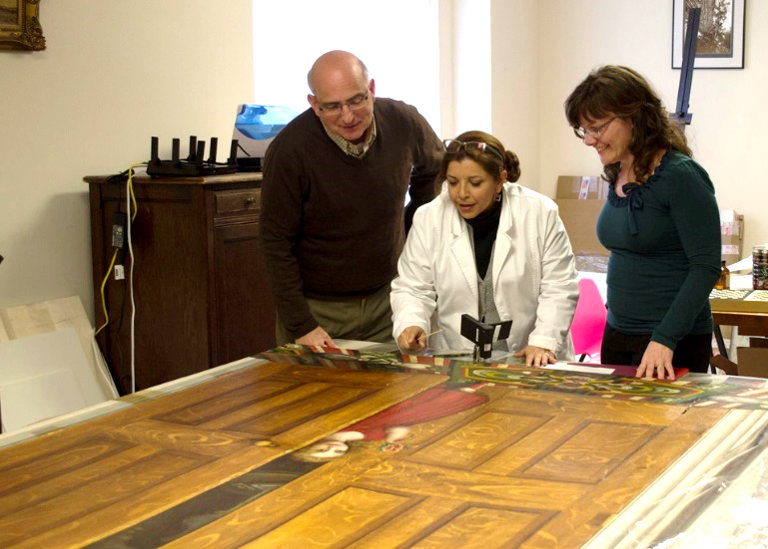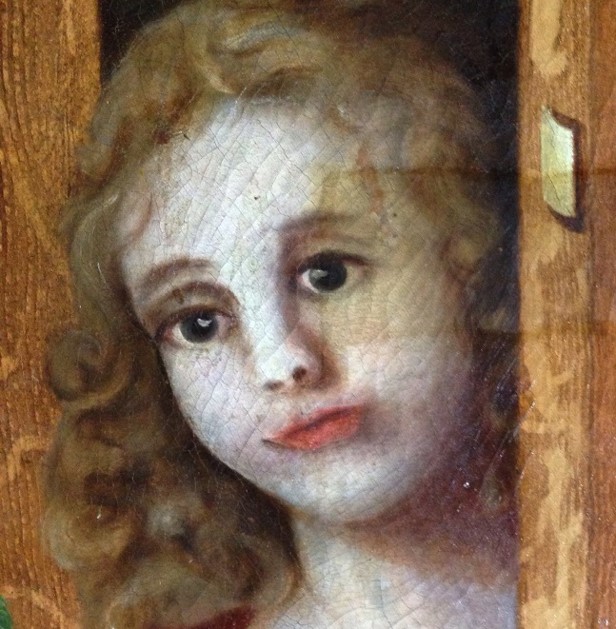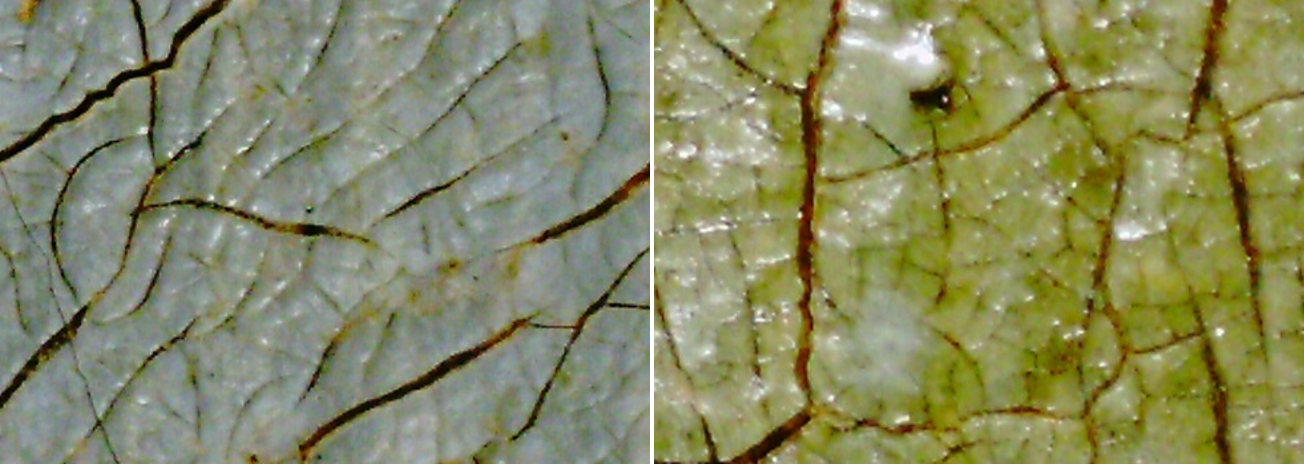Posts Tagged art
Glass Gallery x2

With the Davidson-Gerson Modern Glass Gallery opening in Henry Ford Museum of American Innovation last fall, Greenfield Village is the site for the next chapter in this exhibit's story.
The Davidson-Gerson Modern Glass Gallery is in Henry Ford Museum of American Innovation. It opened in October 2016. The Davidson Gerson Gallery of Glass is in Greenfield Village’s Liberty Craftworks District. Its grand opening is set for spring 2017.
Both galleries provide an in-depth look at the American glass story. The museum gallery focuses specifically on the studio glass movement of the 1960s, while the village gallery, supported by the Michigan Council for the Arts and Cultural Affairs, surveys the history of American glass, ranging from 18th-century colonial glass through 20th-century mainstream glass as well as studio glass.
Charles Sable, curator of decorative arts, was tasked with updating and reinterpreting The Henry Ford’s American glass collection. He envisioned creating an all-new gallery adjacent to the museum’s Glass Shop in the Liberty Craftworks District of Greenfield Village — a place to exhibit portions of the institution’s 10,000 glass artifacts currently in storage. His vision intersected with that of collectors Bruce and Ann Bachmann, who were seeking to donate their 300-piece studio glass collection.
According to Sable, the studio glass movement, which began in the early 1960s, is recognized as a turning point in the history of glass, as artists explored the qualities of the medium in a studio environment. Their goal was to create fine art. Evolving over a 20-year period, the movement matured in the 1980s with artists producing a myriad of unique works.
While other museums were interested in the Bachmann collection, it was The Henry Ford that garnered the collectors’ full attention and eventually their generous donation. “The Bachmanns had very specific criteria for their collection,” said Sable. “They were looking for an institution that was in an urban area, preferably in the Midwest where they live, had a large visitation, and was capable of exhibiting and maintaining the collection.
“As Bruce told me, it was a good marriage. He felt his collection would live here in perpetuity,” added Sable.
The story of the studio glass movement is now on permanent exhibition in the DavidsonGerson Modern Glass Gallery, which is located in the museum space that once showcased The Henry Ford’s silver and pewter collections. “Our exhibit is a deep dive into how studio glass unfolded,” said Sable. “It’s the story of the combination of science and art that created a new and innovative chapter in the history of glass.”
The exhibition also looks at the impact of studio glass on everyday life and includes a section on mass-produced glass influenced by studio glass and sold today by retailers such as Crate and Barrel, Pier 1 Imports and others.
Once the new Davidson-Gerson Gallery of Glass in Greenfield Village opens this spring, thousands of visitors will have an added opportunity to see larger-scale studio glass pieces from the Bachmann collection as well as the evolution of American glass.
DID YOU KNOW?
The Bachmann studio glass collection includes representation of every artist of importance in the movement, including Harvey Littleton, Dominick Labino, Dale Chihuly, Lino Tagliapietra, Laura Donefer and Toots Zynsky.
The gallery is a careful redesign of the McDonald & Sons Machine Shop in the Liberty Craftworks District.
BY THE NUMBERS
180: The number of glass artifacts on display in Henry Ford Museum of American Innovation’s Davidson-Gerson Modern Glass Gallery.
155: The number of artists represented in the Bachmann studio glass collection.
300: The number of studio glass pieces in the Bachmann collection
Additional Readings:
- Davidson-Gerson Modern Glass Gallery
- Beyond Favrile: Louis Comfort Tiffany and American Culture
- Western Interactions with East Asia in the Decorative Arts: The 19th Century
- Tiffany and Art Glass
21st century, 20th century, The Henry Ford Magazine, philanthropy, Henry Ford Museum, Greenfield Village, glass, decorative arts, art
Studio Glass Expert on Display: Paul Stankard

"Rose Hips Diptych C8" by Paul Stankard, 1994. THF163681
Paul Stankard is one of the founders of the Studio Glass movement of the 1960s and 1970s. Most early Studio Glass artists began their careers creating paperweights and moved on to other forms. Stankard concentrated on creating the most technically sophisticated and beautiful paperweights he could imagine. Today, Stankard is acclaimed for his miniature worlds, consisting of imaginary botanicals, bees and sometimes human figures.

"Cylinder with Native Flowers, Honeybees, and Figures" by Paul J. Stankard, 2002. THF165042
You can see examples of his work in Henry Ford Museum's newest exhibit, the Davidson-Gerson Modern Glass Gallery, as well as in this expert set, selected by our staff, within our digital collections.
Additional Readings:
- Vase Made by Harvey K. Littleton at the Second Toledo Museum of Art Glass Workshop, 1962
- Western Interactions with East Asia in the Decorative Arts: The 19th Century
- Photographing Glass
- Beyond Favrile: Louis Comfort Tiffany and American Culture
making, 21st century, 20th century, Henry Ford Museum, glass, art
Now Open: Davidson-Gerson Modern Glass Gallery

When Charles Sable, curator of decorative arts, was tasked with updating The Henry Ford's American glass collection, he accepted the challenge with enthusiasm. He envisioned creating an all-new gallery on the grounds of The Henry Ford, a place to exhibit portions of the institution's 10,000 glass artifacts currently in storage.
The gallery would also give him a strong talking point with Bruce and Ann Bachmann, private collectors of one of the most important Studio Glass collections. According to Sable, the Studio Glass Movement, which originated in the early 1960s, is recognized as a turning point in the history of glass as artists explored the qualities of of the medium in a studio environment. Their goal was to create fine art, in place of craft or mass produced objects.

While other museums were interested in the Bachmann Collection, it was The Henry Ford that garnered their full attention. "The Bachmanns had very specific criteria for their collection," said Sable. "They were looking for an institution that was in an urban area, preferably in the Midwest where they live, had a large visitation, and was capable of exhibiting and maintaining the collection."
After years of hard work, The Henry Ford recently added the Bachmann glass collection to its Archive of American Innovation. "As Bruce [Bachmann] told me, it was a good marriage," noted Sable of the donation. "He felt his collection would live here in perpetuity."

This month, the story of the Studio Glass Movement becomes a permanent exhibit in Henry Ford Museum with the opening of the Davidson-Gerson Modern Glass Gallery. "Our exhibit is a deep dive into how Studio Glass unfolded," said Sable. "It's the story of the combination of science and art that created a new and innovative chapter in the history of glass. As a history museum we look at the impact of Studio Glass on everyday life – we will include a section on mass-produced glass influenced by Studio Glass, but sold by retailers such as Crate and Barrel, Pier 1 Imports and others."
With donor support and fundraising, Sable's vision for an all-new glass gallery in Greenfield Village is also a reality. The Gallery of American Glass will open in the Liberty Craftworks District in spring 2017, giving thousands of visitors the opportunity to see the artistry and evolution of American glass through artifacts, digitized images and interactive displays.
Did You Know?
The Bruce and Ann Bachmann Studio Glass Collection numbers approximately 300 pieces, with representation of every artist of importance, including Paul Stankard, Harvey Littleton and Toots Zynsky.
The all-new Gallery of American Glass is a careful redesign of the McDonald & Sons Machine Shop in Greenfield Village's Liberty Craftworks District. The Davidson-Gerson Modern Glass Gallery in Henry Ford Museum is located in the hall that once displayed the sliver and pewter collection.
Additional Readings:
- Vase Made by Harvey K. Littleton at the Second Toledo Museum of Art Glass Workshop, 1962
- "Devils Blowing Glass" by Lucio Bubacco, 1997
- Tiffany and Art Glass
- Artist in Residence: Shelley Muzylowski Allen
Greenfield Village, Henry Ford Museum, philanthropy, art, glass
Digitizing Our Newest Exhibit

Henry Ford Museum’s newest exhibit, the Davidson-Gerson Modern Glass Gallery, formally opens on October 14, 2016. In this exhibit, you’ll learn about the evolution of modern studio glass, and how it blends art, science, and technological innovation.
We’re happy to announce that we’ve already digitized about 80% of the pieces on exhibit, with the remainder to be available online by early next year. One example, shown here, is “Scarlet Macaw” from the Parrot Series by Noel Hart, an Australian artist.
Get a feel for studio glass by visiting our Digital Collections and browsing this and dozens of other pieces from the Bruce and Ann Bachmann Glass Collection that you’ll see in the exhibit, including many with 360-degree images—and then be sure to plan a trip to see these pieces and more in person!
Ellice Engdahl is Digital Collections & Content Manager at The Henry Ford.
Additional Readings:
Opening the Door to Preservation

“Opening the Door” is an unusual and large ( 6 feet tall and 4 feet wide) painting that recently received some much-needed conservation here at The Henry Ford.
Painted in the 1840s by self-trained artist George W. Mark, it depicts a young girl holding a flower. She stands in an elaborately-painted open doorway. Behind the girl a bust and lamp are visible on the table in a very shadowy room. The intent is to present a life-size vision that fools the eye into thinking that we are looking into a real space.
If you have the opportunity to take part in a VIP or Special Access tour of our Benson Ford Research Center storage, you will see this painting. It is greatly admired and it is positioned in a prominent location in the state-of-the-art storage facility here at The Henry Ford.
The painting needed conservation attention because it was not in stable condition after years of storage and many moves. Some of the damages were due to the challenges of handling – the painting is not framed, so corners got crushed when it was set down with too much force. And past attempts to hang it resulted in old patched holes near the top.
Take a look behind the scenes to see some of our work conserving "Opening the Door." This project was made possible by the generous support of The American Folk Art Society and Susan and Henry Fradkin. Curator of Decorative Arts Charles Sable, Conservator Celina Contreras de Berenfeld, and Senior Conservator Clara Deck examine the work in progress.
Curator of Decorative Arts Charles Sable, Conservator Celina Contreras de Berenfeld, and Senior Conservator Clara Deck examine the work in progress.
This image shows the last old, yellowed varnish as it was removed from the paint surface.

This is a microscopic image of the thick varnish, before and during removal. The cracks (which are actually quite small!) are expected in a painting of this age and type.
Many paintings suffer over time due to the natural aging that darkens the once-clear protective varnish coat. As the varnish darkens, it shifts colors that were originally intense and bright; they become murky and brownish. Varnish removal restores the painting’s original colors. It is not unusual for old varnishes to require renewal, and this was done as part of an extensive conservation treatment completed last year.
Old patches were also redone so that they are invisible from the front and the whole painting was lined with stable backing material to support its large size. The restoration of damaged areas of the paint was done by “in-painting” only the small areas of lost paint. Finally a new, reversible varnish was applied overall.
The final result is a stronger, stable painting that can survive for at least another 171 years in the care of The Henry Ford.
Clara Deck is former Senior Conservator at The Henry Ford.
Massachusetts, 19th century, 1840s, paintings, conservation, collections care, by Clara Deck, art
Take Me Home Huey

The Vietnam War is remembered as “the Helicopter War” for good reason. The Huey helicopter played a pivotal role serving the U.S. Armed Forces in combat as well as bringing thousands of soldiers and civilians alike back to safety. The helicopter’s prominent rotor “chop” and striking visual as it flew in groups across the sky, became iconic symbols of a challenging period in our nation’s history; symbols that continue to evoke powerful feelings today.
The Henry Ford is proud to host a special display on the front lawn of Henry Ford Museum: Take Me Home Huey is mixed-media sculpture created from the remains of an historic U.S. Army Huey helicopter that was shot down in 1969 during a medical rescue in Vietnam.
Artist Steve Maloney conceived of the piece to draw attention to the sacrifices made by veterans of the U.S. Armed Forces, and the 50th anniversary of the start of the Vietnam War. Maloney partnered with Light Horse Legacy (LHL), a Peoria, Arizona-based nonprofit and USA Vietnam War Commemorative Partner focused on Post-Traumatic Stress Disorder. LHL acquired the Huey helicopter – #174 – from an Arizona boneyard, re-skinned and restored it, and delivered it to the Maloney to transform into art for healing.
Learn more about Take Me Home Huey here.
Greg Harris is Senior Manager of Events & Program Production at The Henry Ford.
Asia, Michigan, flying, events, Dearborn, by Greg Harris, art, 21st century, 20th century, 2010s, 1960s
An Artist Visits the Bugatti

Since 1929, The Henry Ford has hosted a steady stream of celebrity visitors, eager to see our iconic artifacts. In 1961, French artist and iconoclast Marcel Duchamp and his wife visited Henry Ford Museum. If you know Duchamp’s history, you might find it an interesting contrast that the man who rejected art that was merely beautiful in favor of art “in the service of the mind” stopped to pose for this photo in front of the Bugatti. The large, luxurious, and beautiful car seems a far cry from “Fountain,” created by Duchamp more than four decades before. We’ve just digitized dozens of images featuring celebrities of all stripes visiting our campus over many decades—browse more by visiting this Expert Set we’ve created within our Digital Collections.
Ellice Engdahl is Digital Collections & Content Manager at The Henry Ford.
Michigan, Dearborn, 20th century, 1960s, luxury cars, Henry Ford Museum, Driving America, digital collections, convertibles, cars, by Ellice Engdahl, art
The Henry Ford on the DIA's Rivera Court

This year The Henry Ford has been very excited to be collaborating with the Detroit Institute of Arts, and other Detroit-area community organizations, to provide additional context for their current exhibit, "Diego Rivera and Frida Kahlo in Detroit." This year we've been digitizing parts of our collection that directly relate to Diego Rivera, Frida Kahlo, their relationship with Edsel Ford and Ford Motor Company, and the creation of the well-known frescos found in the DIA's Rivera Court.

Because of the close involvement of Edsel Ford and Ford Motor Company in the project, our archives contain documents, photographs, and correspondence related to these subjects.

Earlier this year a group of curators spent time in Rivera Court thinking about how their areas of expertise here at The Henry Ford connect in some way to Diego's murals. From agriculture to communications, each of our curators found an instant connection.

Take a look at our curators' reflections in this series of videos shot on location at the DIA.
21st century, 2010s, 20th century, 1930s, Michigan, Diego Rivera and Frida Kahlo in Detroit, Detroit Institute of Arts, Detroit, by Lish Dorset, art
As part of our collaboration with the Detroit Institute of Arts (DIA) and other Detroit-area community organizations to provide additional context for the Diego Rivera and Frida Kahlo in Detroit exhibit at the DIA through July 12, 2015, The Henry Ford has been digitizing parts of our collection that relate to Diego Rivera, Frida Kahlo, and their relationship with the Ford family and Ford Motor Company. We ran across a couple dozen 1932 photographs, including this one, of the Ford Motor Company Mexico City plant, all marked “Kahlo Foto,” and wondered whether these might be the work of Frida Kahlo’s father Guillermo Kahlo. An essay in the exhibit catalog by Diego Rivera’s grandson Juan Rafael Coronel Rivera notes “Don Guillermo was considered the finest architecture photographer in Mexico, a master in the field…. Diego respected Don Guillermo … for his studies of industrial machinery: Don Guillermo recorded the day-to-day modern development of the country; every factory and every major engine installation became the subject matter of his photographs, which were published in the Mexican press as an indisputable symbol of the nation’s advancing progress.” We haven’t yet found any further information about the genesis of these images, but it seems likely, given the labels on the images, Guillermo Kahlo’s architectural photography background, and the year the images were taken (the same year Rivera started work on the Detroit Industry murals at the DIA), that these images have a tie to Frida and Diego’s time in Detroit and relationship with the Fords. Visit our collections website to see all of these images, as well as the other related material we’ve digitized.
Ellice Engdahl is Digital Collections & Content Manager at The Henry Ford.
Michigan, Detroit, 20th century, 1930s, photographs, Ford Motor Company, digital collections, Diego Rivera and Frida Kahlo in Detroit, Detroit Institute of Arts, by Ellice Engdahl, art
#Architecture That Houses #Creativity

Rediscovery with Ryan: Letter and Drawing by George Washington Carver
Sent to Henry Ford, 1941
One of the themes discussed during #MuseumWeek was that of architecture, challenging participants to “explore the history, architectural heritage, gardens and surroundings of museums” you have visited. Here at the The Henry Ford, our venues provide nearly unlimited potential for you to creatively capture our stunning grounds and architecture. I believe that this potential highlights the inspirational aspect of human creativity. The same creativity that resulted in our beautiful architecture and grounds, now inspires your own personal creativity when you visit. Whether you are trying to get that perfect picture of the village or you are simply sitting back and admiring the grandeur of the museum, it’s hard to ignore the fact that creativity is a key component in what The Henry Ford represents.
As custodians of American innovation, we are guardians of creativity. Inventiveness and innovation would not exist if it wasn’t for the creative spirit. So for this theme, I chose to talk about someone who is represented in our archives, on our beautiful grounds, and is also an ideal example of using that creative spirit: George Washington Carver. Continue Reading
art, Henry Ford, correspondence, Greenfield Village, Greenfield Village buildings, African American history, George Washington Carver, by Ryan Jelso


